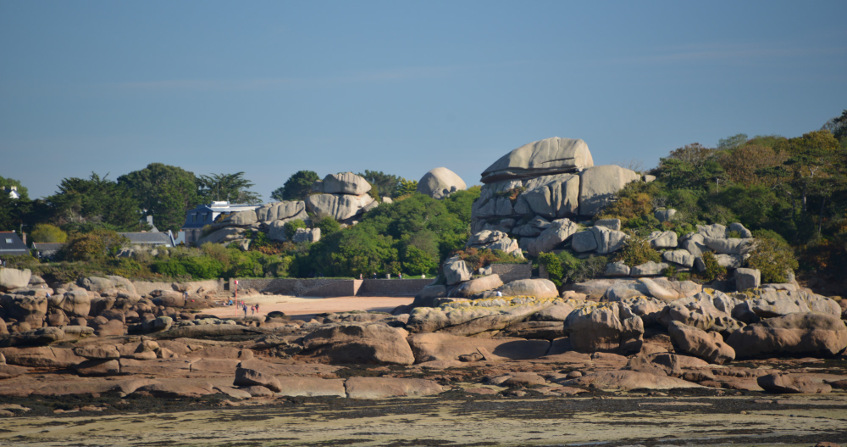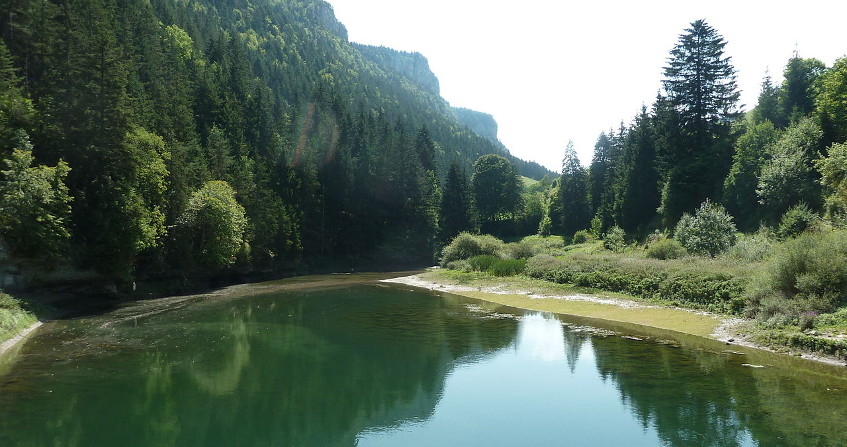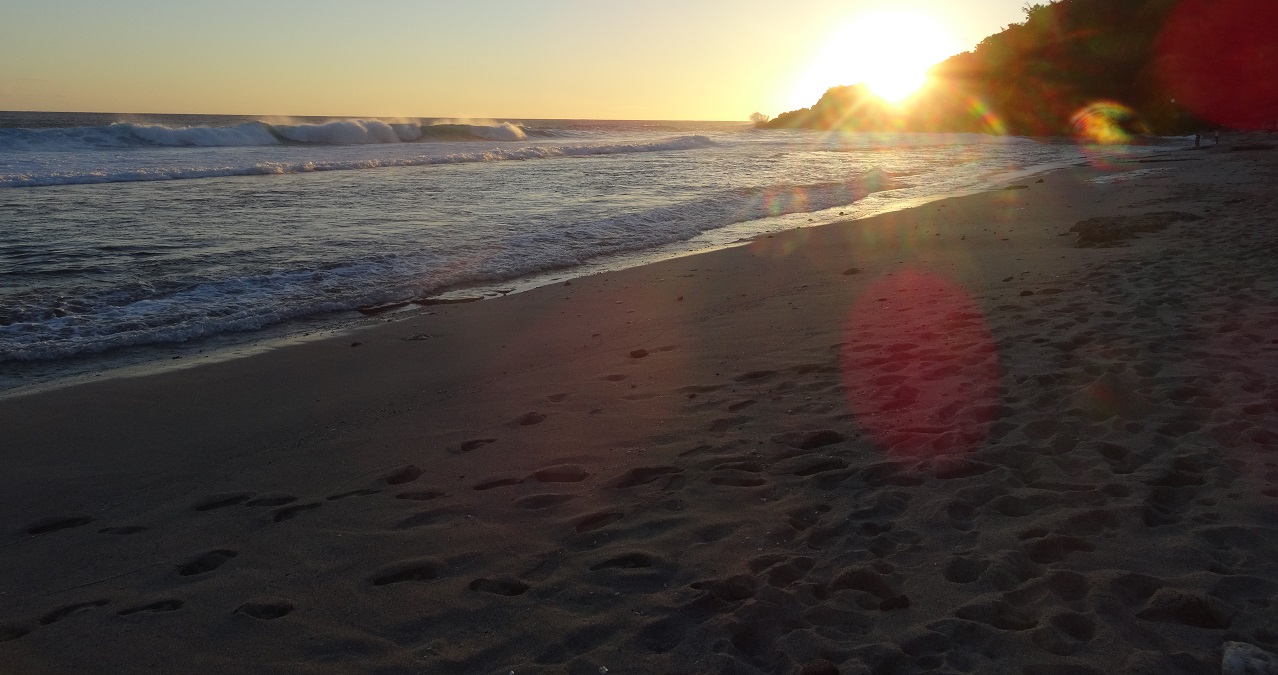Natural mineral waters
PDF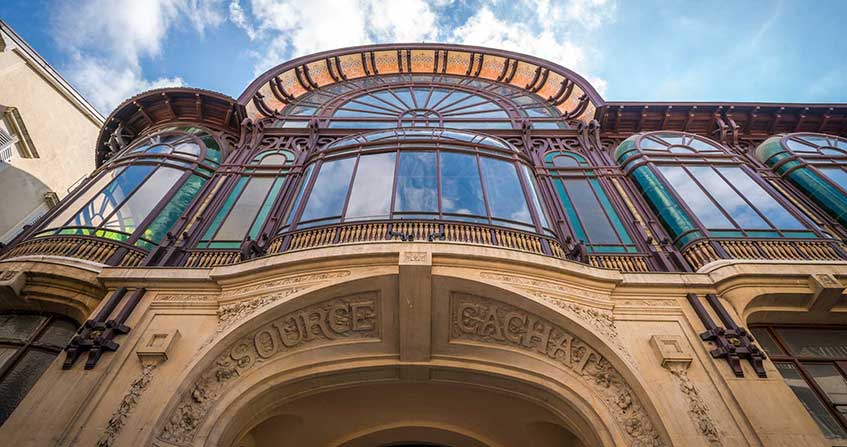
Natural mineral water is water that is exclusively of underground origin, collected either from a spring or by drilling. Defined as such by regulation, it is used for bottling and/or thermalism. Pure, geologically protected and with a perfectly stable mineral composition, it is not subject to any chemical treatment or disinfection before bottling or thermal use. These waters belong, by definition, to aquifers with high inertia, generally deep, in some cases carbogeneous. Well protected from surface contamination by their geological cover and, where appropriate, also by dedicated protection policies, these aquifers are generally located in regions that are not very exposed to anthropogenic pressures (intensive agriculture, industry, urbanization, etc.). They make a significant contribution to local economic development.
1. Waters that come from afar
Since prehistoric times, and at least since ancient times, mineral waters and thermal waters (spring waters warmer than the spring waters commonly found in a given region) have been recognized and sought by man. They have long been part of its pharmacopoeia (AFSSA, 2008 [1]). Five centuries before our era, in ancient Greece, doctors already recommended the consumption of “natural mineral waters” (NMW) and their use as a cure because they attributed them therapeutic virtues. This tradition continues with the Roman and Arab civilizations drinking water on site (Figure 1) or using it in baths. It was thus the Romans who built the first thermal baths in the West, thus perpetuating the cult of healing water.
1.1. A long history in France
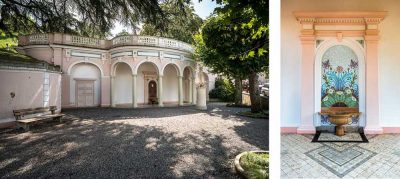
French legislation on the police and monitoring of natural mineral waters was not really put in place until the early 19th century. The measures taken at that time were aimed at controlling water quality, protecting its physical and therapeutic properties, and ensuring the harmonious establishment of thermal baths in order to best manage a capital with strong economic potential. Due to the development of catchments by drilling and the multiplication of “spring wars” (the capture of the same mineral or thermal water resource by means of different wells, belonging to different owners), since 1856, the law also gives the possibility to create a protection perimeter around each source to protect its flow. This scope is accompanied by a mandatory public declaration of interest (DIP).
The use of natural mineral waters for purposes other than thermal baths appeared in France in the 16th century [1], with the practice of bottling water for the Dukes of Lorraine. In 1632, an edict of Louis XIII authorized the transport of natural mineral water in sealed wax bottles. In 1709 a monopoly was established for the transport and sale of natural mineral waters bottled by persons authorised by the Superintendent General. After several other modifications, it was in 1957 that a decree made the transport, treatment and bottling of natural mineral waters subject to ministerial authorization. Finally, the legislative bases applicable to natural mineral waters appear in Act No. 2004-806 of 9 August 2004, codified under articles L. and R. 1322-1 et seq. of the Public Health Code. This law was recast in 2007.
It was in fact in the 19th and early 20th centuries that the bottled water market developed. This begins with the people taking the waters at the end of the cure, who get into the habit of bringing home natural mineral water used for their treatments [1]. In France, the large bottling companies appeared shortly before the Second World War and the market developed thereafter.
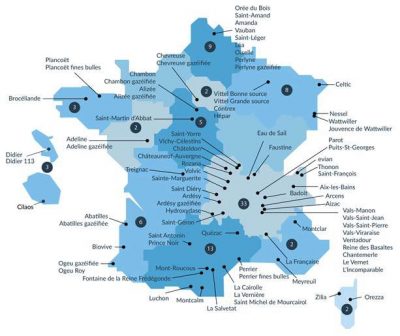
In 2014, the production of packaged water in France is about 12 billion litres [3], including approximately 7 billion litres of BMS and 5 billion litres of spring water. France, although not the leading European market for the sale of bottled water, is the world’s leading exporter of natural mineral waters, with more than a third of exported production [4]. This bottled water industry generates many jobs throughout the national territory and most often in rural areas [4]:
- 10,000 direct jobs related to the bottled water industry.
- 30,000 indirect jobs, without considering the thermal activity.
Most of these jobs cannot be relocated. By essence, they are attached to springs, as natural mineral water cannot be transported before it is packaged. They contribute to the dynamism of often isolated regions where the exploitation of a source is often the only industrial activity.
In Volvic (63), for example, the two bottling plants employ nearly 900 people for a municipality with just over 4,000 inhabitants. The same applies to the municipality of Vergèze (30), which has a population of 3 700 and where Nestlé Waters Sud, which produces Perrier, employs more than 1 000 people.
The bottling industry has not broken its links with thermalism and, in many sites, the same sources feed both types of activity. This is the case in Contrexéville, Evian, Thonon-les-Bains, Vichy, Vittel. Thermalism thus generates another 10,000 direct jobs according to specialists, around 50,000 indirect jobs (accommodation, catering, etc.) and as many induced jobs (trade, leisure, tourism, etc.). Thermalism remains strongly dependent on the vitality of natural mineral water brands (CSEM, 2014).
1.2. A strict regulation
Currently, natural mineral water is defined in France by the transposition, in the Public Health Code and in the regulations [5], of the European regulations [6] (EFBW, 2017). The 2007 decree is supplemented by 5 decrees of 2007, 2010 and 2013 [4] relating to the preparation of applications for a declaration of public interest, the assignment of a protection area, the preparation of an application for authorisation, water quality criteria, health control and water monitoring analyses, etc.
In this context, Article R. 1322-2 of the Public Health Code thus transposes the Community definition of MNE:
“A MNE is microbiologically sound water… from an underground groundwater table or deposit exploited from one or more natural or drilled emergences constituting the source. It shows, within the framework of known natural fluctuations, that its essential characteristics, in particular its composition and temperature at emergence, are stable and unaffected by the flow rate of the water withdrawn.
It is different from other water intended for human consumption:
- By its nature, characterized by its content of minerals, trace elements and other components
- By its original purity, both characteristics having been preserved intact due to the underground origin of this water which has been kept away from any risk of pollution. »
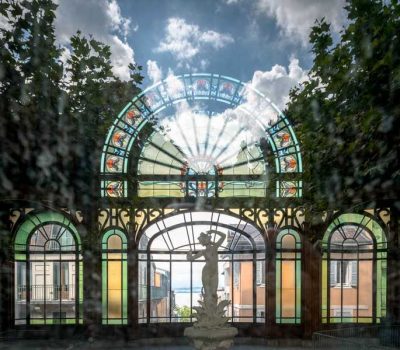
Until the early 1980s, regulations required, particularly in France, that the therapeutic properties of EMN be demonstrated (by the Académie de Médecine). This is no longer an obligation under the current European regulatory framework. However, EMNs approved before this regulatory evolution have all necessarily been the subject of this recognition of their therapeutic virtue.
Some countries in the world do not have specific regulations; the definition of BMS is then based on the Codex Alimentarius (Codex Standard 108-1981) or “Food Code” standards. The Codex Alimentarius was created by the Food and Agriculture Organization of the United Nations (FAO) and the World Health Organization (WHO) in 1963 to develop harmonized international food standards to protect the health of consumers and promote fair practices in international food trade [7].
2. Underground, healthy and stable
In practice, natural mineral water is therefore underground, healthy and stable.
2.1. Underground
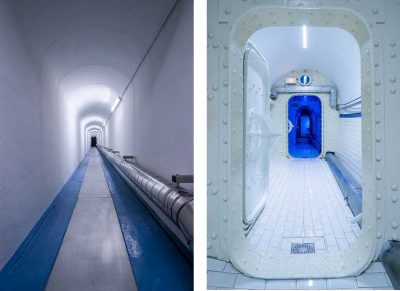
It is exclusively of underground origin, collected either from a spring (a natural outlet of groundwater; Figure 4) or by drilling (a well, generally vertical, to reach the rock containing the groundwater – the aquifer – and pump it out). Thus, surface water (water collected from a river or lake, for example) cannot be bottled as natural mineral water (nor as spring water; it can only be bottled in France under the name of “water made potable by treatment”);
2.2. Healthy
It must be microbiologically healthy, i.e. it must not contain pathogenic micro-organisms, in particular those linked to human or animal contamination. Since EMN does not require sterilization and/or storage treatment (such as the addition of chlorine, which is very frequently used for tap water), or any other chemical treatment, it is not sterile and therefore contains a natural flora. However, it is not very abundant due to the low amount of nutrients present in groundwater, particularly in deep groundwater.
This lack of sterilization/conservation has operational consequences for the natural mineral water operator: the collection installations (source, boreholes, etc.) must be made of materials that meet food standards and are resistant to cleaning (e. g. stainless steel). They are equipped with devices (air filters for example, cement, anti-intrusion…) to prevent any contamination, particularly by atmospheric flora, surface water, or by humans. The installations must also be able to be (and are) regularly maintained (sanitations) to avoid any development within them of the natural flora of the aquifer. These precautions constitute a major difference, for example, compared to the use of groundwater for public distribution water.
In order to guarantee this microbiological purity, and to avoid human, microbiological or other contamination, the aquifers from which natural mineral water is produced must be well protected from infiltration from the surface. This is the case thanks to their natural geological protection. In Evian-les-Bains (Haute-Savoie) for example, this protection is provided by impermeable rocks (a bottom moraine of glacial origin) several tens of metres thick below the ground surface;
2.3. Stable
The “stability of its essential characteristics” (temperature, mineralization…) is one of the key elements of the definition of natural mineral water, which also distinguishes it from “spring water”, another type of bottled water for which this stability is not required. In practice, this means that only aquifers with high inertia, showing slow circulation, most often of more than pluriannual duration, can claim recognition of MNE status. This is not the case for surface aquifers, which are regularly “diluted” by rainwater recharge; karst aquifers of calcareous rocks, with rapid flows; or alluvial waters, which interact with a river.
The acquisition of mineralization (the mineral salts naturally dissolved in water) is achieved through the interaction between water and rock during the groundwater path: water slowly dissolves the rock within which it flows and reaches a balance with it upon contact. In the case of naturally sparkling waters (see § 3), the presence of carbon dioxide in the subsoil increases these water-rock interactions and promotes the dissolution of minerals. The same applies to the high temperatures reached by deep water. It is mainly these dissolved minerals that give natural mineral water its therapeutic properties. Thus, for some MNEs, some of these dissolved minerals may even exceed drinking water standards. In any case, this mineralization is exclusively of natural origin; a BMS cannot be artificially added with minerals.
The long-term maintenance of the purity and stability of a BMS may require the implementation of protective actions at the surface, in the recharge area, or catchment area, of the mineral aquifer (see section 5).
Even if some natural mineral waters are characterized by very slow circulation and therefore have an ancient age (several tens or even several thousand years) at the source or during drilling, they are an integral part of the natural water cycle. They must therefore be managed in a sustainable manner, ensuring in particular that no more water is withdrawn, at source or by drilling, than the quantity of water naturally replenished by precipitation (rain, snowmelt, etc.) from the catchment area where the mineral aquifer is fed.
3. More or less mineralized
The mineral composition, or “hydrochemical facies”, of a natural mineral water reflects the nature of the rocks it has passed through (and therefore their mineralogical composition) and, for some mineral elements, such as silica or magnesium for example, the duration of underground flows. With the exception of certain isotopic characteristics of the water molecule, which are for example related to the altitude at which rain or snowmelt water has infiltrated, the composition of the rain is totally masked by this subsequent acquisition of mineralization.
Thus, waters circulating in calcareous rocks generally contain a significant calcium content, or even magnesium if the limestones are dolomitic. Sulphates are often linked to the presence of evaporites (e.g. gypsum), or to the leaching of sulphides. Sodium, when not evaporated (and then correlated with chloride), often reflects long water-rock interactions at depth in the context of granitic or metamorphic rocks. Silica is more present in the waters of granitic and metamorphic or volcanic rocks than in sedimentary rocks. The scientific discipline that aims to characterize the groundwater flow from its mineral composition is called hydrogeochemistry.
Because of this intimate relationship between the nature of the subsoil and the specificity of each natural mineral water, the term “terroir” is also often used for natural mineral waters.
There are three categories of natural mineral waters (Directive 2009/54/EC of 18 June 2009 [8]), depending on the mineral salt content (calculated as a residue after evaporation of the water at 180°C):
- “very low mineral content”: the mineral salt content is less than 50 mg/L (e.g. EMN of Montcalm, Mont Roucous…) ;
- “weakly mineralized or oligomineral“: the mineral salt content is less than 500 mg/L (e.g. EMN of Aizac, Chantemerle, Ventadour, Perrier, Luchon, Sail-les-Bains, Ogeu, Esource du Roy, Aix-les-Bains, Evian, etc.)
- “rich in mineral salts“: the mineral salt content is higher than 1,500 mg/L (e.g. EMN of La Ferrugineuse Incomparable, La Reine des Basaltes, Vals-Vivaraise, Quézac, Hydroxydase, Rozana, Saint-Diéry, Sainte-Marguerite, Saint-Antonin, Hépar, Contrex, Cilaos, etc.).
In view of the specific nature of certain natural mineral waters, indications or, on the contrary, contraindications may be proposed in certain physiological or pathological conditions. For more information, the report of the National Academy of Medicine on the place of natural mineral waters in food (Queneau and Hubert, 2006 [9]) can be usefully consulted.
The particular case of naturally sparkling waters is worth mentioning. The example of the Badoit spring (Loire), which has recently been the subject of a study analysing in particular the isotopic composition of carbon dioxide and mineral water, is representative of the processes at their origin. In this part of the Massif Central, the earth’s crust is fractured and thinned. This thinning causes the earth’s mantle to rise to a depth of about fifteen kilometres. Its partial melting results in the degassing of carbon dioxide (CO2), which can rise in gaseous form within fractures in the earth’s crust.
At a depth of about 2.5 to 3 km, this gaseous carbon dioxide dissolves in water infiltrated from the surface and at least 20,000 years old. These waters, rich in dissolved CO2, then rise again through fractures in the crust. They acquire a strong mineralization because CO2 increases water-rock interactions. During their ascent, they encounter two types of fractures: some allow the ascent to continue; others, because of their properties (thickness of the fracture in particular), cause the water to degas at depth and the only ascent of CO2, in gaseous form.
In the last hundreds of meters of their deep sea course, these waters, rich in CO2 and gaseous CO2, mix and separate respectively with less mineralized waters, most of which are older than 100 years old, contained in granitic rocks. It is in these granitic rocks, between 100 and 300 m deep, that this natural mixture is captured by drilling and bottled.
4. More or less warm
In the above example of the Badoit spring, the upwelling of deep water is very slow. Natural mineral water therefore has time to cool down gradually during this period; on the surface, it does not therefore have a significantly higher temperature than that of other sources, on the surface, in the area. It should be remembered that the temperature increases, on average, by 3°C per 100 m when you sink into the ground.
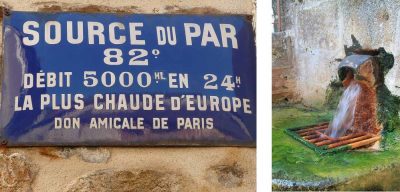
Some chemical elements, such as silica for example, are indicators of the temperature that the water has undergone at depth, and therefore of the depth that it has reached, even if the mineral water has then partially or totally cooled as it rises to the surface. These chemical elements are called “geothermometers“. It is for example thanks to these geothermometers that the infltration depth of Badoit water (2.5 to 3 km) could be determined.
5. Protected and managed over time
As mentioned above (§ 2), natural mineral waters are an integral part of the natural water cycle and must therefore be managed in a sustainable way to ensure the quantitative sustainability of the water resource.
In order to preserve the long-term stability and purity of natural mineral water, bottlers have put in place “protection policies” for the impluviums (or catchment areas) of their sources. The catchment area is the territory on which the part of precipitated rainwater (and/or snowmelt) that infiltrates the subsoil feeds the mineral aquifer and thus contributes to the renewal of the resource. In other words, a precipitated drop on the impluvium territory may join the mineral aquifer; a precipitated drop outside this territory may eventually recharge other groundwater, but in no case may the mineral aquifer in question.

In Evian, for example [10], the watershed has an area of about 35 km2 (Figure 6). It is estimated that 50% of the precipitation falling into the atmosphere returns to the atmosphere as water vapour due to evaporation and especially evapotranspiration due to plant metabolism. About 35% of the water flows on the surface or feeds shallow, non-mineral groundwater bodies. Thus, only 15% of rainwater recharges the mineral aquifer.
An original model has been in place for nearly 30 years to ensure the protection of the impluvium and the sustainability of Evian’s water purity, while promoting the development of this territory, the Gavot plateau. The Association for the Protection of the Impluvium of Evian Mineral Waters (APIEME) [11], created in 1992, is a true “local water parliament”. It includes the mayors of the nine municipalities located on the impluvium, those of the four municipalities with mineral water emergencies and the bottling company (SAEME). The association’s mission is to finance projects that are useful for the effective long-term protection of the MNE resource. Some of the projects implemented in recent decades include: the improvement of village wastewater treatment networks and stations; support for the maintenance of traditional agriculture (including AOC/AOP [12] of Abondance, Reblochon and Tomme cheeses), which has been active in the area for centuries and has therefore proved its effectiveness in protecting MNEs; the protection of wetlands on the plateau, which are now labelled “wetlands of international importance” under the RAMSAR Convention [13], etc.
Two thirds of the APIEME’s funding is provided by SAEME and one third by municipalities with Evian MNE catchments. The latter benefit, under French tax law, from specific financial resources (the surtax on natural mineral waters). Particularly because of its functioning, APIEME has led to the development of an economic redistribution policy, which is based on technically rich projects. Based on a precise knowledge of the territory, they must be win-win (for the water society, emerging municipalities and impluvium actors). The projects, which are multisectoral (agriculture, urban planning, sanitation, protection of natural areas, etc.), consist exclusively of collective actions. They do not include “per hectare” subsidies, for example in the agricultural sector. They do not give rise to any land acquisition policy, in particular by SAEME.
This “protection model” has been applied to the other Danone group EMN bottling sites in France (Volvic [14], Badoit [15], La Salvetat [16]) and has also served as an inspiration for the protection of other Danone group sources around the world. Other types of “protection models”, with the same purpose of protecting the MNE resource, have been developed by the Nestlé Group, for example in Vittel [17].
References and notes
Cover photo. Former thermal spa of Evian-les-Bains [Source: H. Schmelzle]
[1] Agence Française pour la Sécurité Sanitaire des Aliments (2008). Guidelines for the safety assessment of natural mineral waters. AFSSA Report, 92 p., https://www.anses.fr/fr/system/files/EAUX-Ra-EauxMinerales.pdf
[2] List of natural mineral waters recognised by the Member States (2013/C 95/03). http://eur-lex.europa.eu/LexUriServ/LexUriServ.do?uri=OJ:C:2013:095:0038:0108:EN:PDF. Last update: 18/09/15
[3] General Directorate of Health (2016). The quality of conditioned water in France. Data 2014. On the basis of the health control provided by the Regional Health Agencies. ! ! ! ! http://social-sante.gouv.fr/IMG/pdf/bilan_ec_2014__vf_.pdf
[4] Chambre Syndicale des Eaux Minérales (CSEM, 2014). Natural Mineral Water. Available at: https://eaumineralenaturelle.fr/
[5] Decree No. 2007-49 of 11 January 2007 on the safety of water intended for human consumption
[6] Directive 2009/54/EC of 18 June 2009 on the exploitation and marketing of natural mineral waters
[7] http://www.fao.org/fao-who-codexalimentarius/about-codex/fr/
[8] European Federation of Bottled Water (EFBW, 2017). Available at: http://www.efbw.org/
[9] Queneau, P., Hubert, J. (2006). Place of mineral waters in the diet (Mineral water as part of the daily diet). Bulletin of the National Academy of Medicine, Volume 190 – December – No9, pp. 2013-2021. http://www.academie-medecine.fr/wp-content/uploads/2013/03/2006.9.pdf
[10] http://www.evian.fr/decouvrir_evian/created_by_nature/a_nee_source_at_the_heart_of_the_alps.html
[11] http://www.apieme-evian.com/
[12] Appellation d’Origine Contrôlée/Appellation d’Origine Protégée
[13] http://www.ramsar.org/fr
[14] http://www.volvic.fr/protegee_by_man/gererer_durably_the_resource.html
[16] http://www.lasalvetat.fr/creee_by_the_nature/the_salvetat_a_nee_source_in_the_natural_park_of_the_high_languedoc.html
[17] https://eaumineralenaturelle.fr/dev-durable/protection-de-la-ressource-en-eau
The Encyclopedia of the Environment by the Association des Encyclopédies de l'Environnement et de l'Énergie (www.a3e.fr), contractually linked to the University of Grenoble Alpes and Grenoble INP, and sponsored by the French Academy of Sciences.
To cite this article: LACHASSAGNE Patrick (January 5, 2025), Natural mineral waters, Encyclopedia of the Environment, Accessed January 15, 2025 [online ISSN 2555-0950] url : https://www.encyclopedie-environnement.org/en/water/natural-mineral-waters-2/.
The articles in the Encyclopedia of the Environment are made available under the terms of the Creative Commons BY-NC-SA license, which authorizes reproduction subject to: citing the source, not making commercial use of them, sharing identical initial conditions, reproducing at each reuse or distribution the mention of this Creative Commons BY-NC-SA license.





